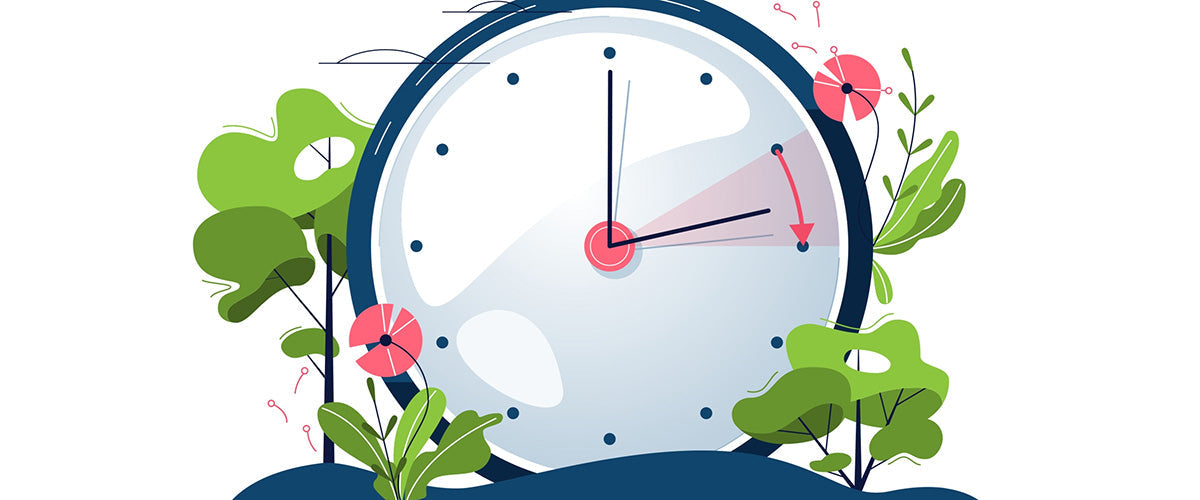Spring Forward: Daylight Saving Time

Get ready for longer days and warmer weather—the first day of spring is just around the corner! But to prepare for the change in season, we have to set our clocks one hour forward for Daylight Saving Time. In this guide, we’ll go over everything you need to know about this year’s leap forward.
When Is Spring Daylight Saving Time?
Every year, Daylight Saving Time begins on the second Sunday of March. The one-hour jump forward will occur at 2 a.m., meaning the clock will go from 1:59 a.m. right to 3:00 a.m.
Who Observes Daylight Saving Time?
Of the 50 U.S. states, 48 observe Daylight Saving Time (DST). Hawaii does not participate in the time change, nor does the state of Arizona. However, the Navajo Nation, which is partially within Arizona’s borders, does observe DST and sets the clock forward.
American Samoa, Guam, the Northern Mariana Islands, Puerto Rico, and the U.S. Virgin Islands do not observe DST.
Do We Gain an Hour or Lose an Hour?
In the spring, we move our clocks one hour ahead. In effect, we “lose” an hour between falling asleep Saturday night and waking up Sunday morning. In the fall, we set our clocks one hour earlier, getting that time back.
How Do I Adjust to Daylight Saving Time?
A one-hour time difference may not sound like a huge difference, but it’s enough to affect your internal clock and disrupt your circadian rhythm. To help ease the transition, give these adjustment tricks a try.
Tips for Coping With Daylight Saving Time
1. Get a Head Start
In the four nights leading up to Daylight Saving Time, start going to bed earlier by 15-minute increments each night. That way, you don’t “lose” an entire hour of sleep the night of. This trick works especially well with young children who need every minute of rest they can get.
2. Maintain Your Usual Schedule
Even if you don’t get a full eight hours of sleep on Saturday night, don’t let the switch to Daylight Saving Time disrupt your normal routines. Waking up, eating, and exercising at the same time you usually do will help your body adjust, aligning your internal clock with the Daylight Saving Time clock.
3. Enjoy the Sunlight
It’s no coincidence that people sleep at the same time the sun does. The human body maintains a 24-hour sleep-wake cycle, a circadian rhythm regulated by the release of melatonin, also known as the “sleep hormone.” The amount of melatonin the body produces depends on exposure (or the lack of exposure) to light. This relationship makes you feel awake when the sun is out and tired when it’s dark.
Getting outside and enjoying natural sunlight can help your body get back in sync with the sun after the start of Daylight Saving Time. After all, the purpose of setting our clocks an hour forward is to align our schedules with the sunlight hours.
4. Practice Healthy Sleep Hygiene
Adjusting to Daylight Saving Time is the perfect excuse to hit the reset button for your sleep hygiene.
When you set your clock forward an hour, think of it as a fresh start on your sleep schedule and habits.
Take this opportunity to commit to sleep hygiene best practices like limiting screen time before bed, monitoring your caffeine intake, exercising regularly, and going to sleep and waking up at the same time every day. Also, you can always support your sleep with your sleep setup including a pressure-relieving mattress, comfortable pillow, and temperature-regulating bedding.
Sleep Better This Spring
Losing an hour for the start of Daylight Saving Time may seem like an inconvenience every year, but ultimately, it helps people stay in tune with the sun’s movements and enjoy longer, brighter days.
This year, be ready to lose an hour, knowing you’ll get it back in November. Within a few short days, you’ll be back in sync with the clock, feeling energized and ready to take on the first days of spring.
Disclaimer: Nolah does not provide medical advice. All resources on the Nolah blog, including this article, are informational only and do not replace professional medical counsel. Talk to your doctor about any health, mental health, or sleep-related issues.


